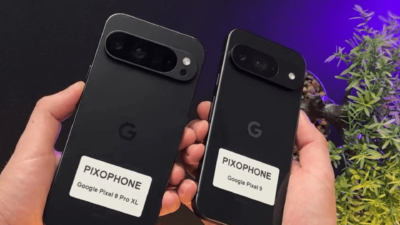Huawei Showed P50 Series Here Are The Details
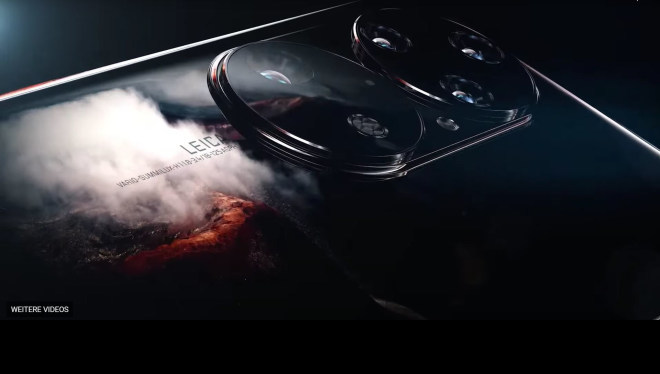
Traditionally, Huawei should have presented the P50 in the spring, but the flagship is late. As part of the presentation of the new HarmonyOS operating system, Huawei officially showed the phone at least once. For a long time, the models from Huawei’s P series were considered the camera smartphones par excellence. Traditionally, the company presented new camera innovations here in the spring, which was then to be found in a slightly different form in the flagships of the Mate series. In 2021 the Huawei P50 will be launched, but everything is different.
Because until June 2, 2021, there were only rumors about the new cell phone in the network. As part of the presentation of HarmonyOS, we finally got to see the Huawei P50. Unfortunately, only a small teaser, which confirms at least some of the speculations from the past few months.
What Huawei confirmed on June 2nd Event
Above all, of course, the design of the teaser video was shown. The Huawei P50 will actually not have one, but two camera humps on its back. The trample that has become a smartphone has three lenses in the upper camera hump, while a large lens and a ToF sensor can be seen in the lower camera section.
A flash is located in an element that connects the two circular camera elements. In addition to the camera element, the lettering “LEICA – Vario-Summilux-H1: 1.8-3.4 / 18 – 125 Asph” can also be seen. This information already gives us some insight into the camera features. On the one hand, Huawei is still getting support from the manufacturer Leica in the design of smartphone cameras. The terms “Vario” and “Summilux” stand on the one hand for a lens with a variable focal length and on the other hand for lenses with, particularly high light intensity.
We can see this information in more detail using the numbers: H1: 1.8 – 3.4 stands for the respective open apertures of the lenses. The wide-angle lens will have an open aperture of f/1.8 and the telephoto lens a light intensity of f/3.4. The numbers 18 – 125 describe the focal length range in millimeters.
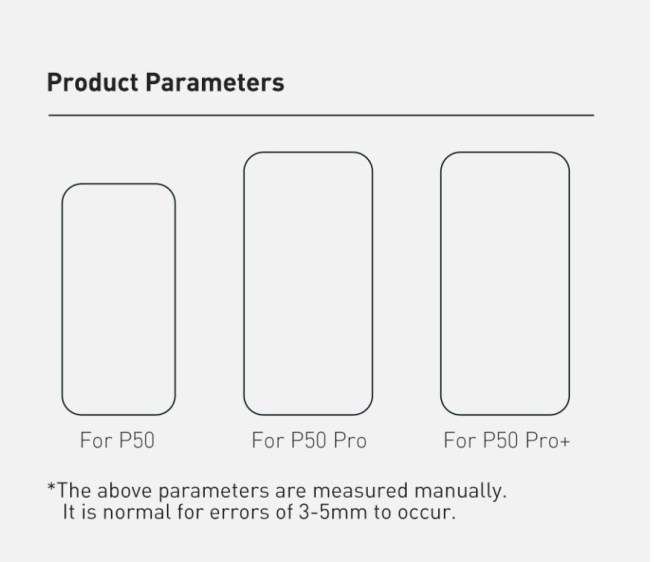
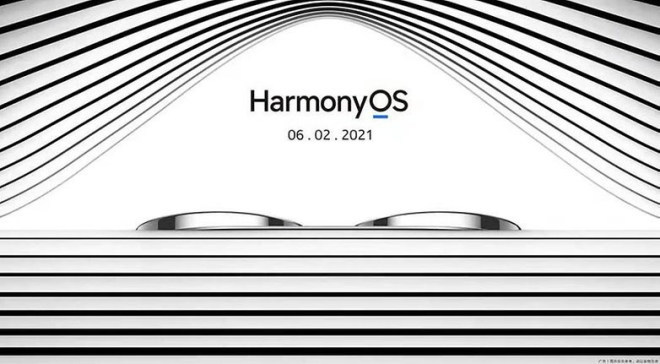
In addition to the camera, we can also see a slight hint that Huawei will build a display with rounded corners in the P50. A decision that not everyone will make. However, you don’t have to be upset at all, because Huawei has not yet revealed a release date. As Huawei CEO Richard Yu revealed, the currently known problems are to be blamed for the delays. An exact release date cannot be expected either.
Price And Release Date
We actually expected the series to be announced in March. However, restrictions imposed under former President Donald Trump have restricted Huawei’s supply chain to the point that the company has been forced to postpone a number of products further into 2021.
As already mentioned, Huawei cannot yet say when they can launch the new smartphone. There is currently still too much uncertainty about chip availability and the restrictions also seem to be too strict.
In terms of price, we are based on the Huawei P40 series announced last year, which was launched worldwide for around 900 US dollars. We, therefore, suspect that the recommended retail price of the Huawei P50 series will be in a similar range.
Huawei P50 Major Highlight Is Camera
The first rumors about the Huawei P50 series took off last October and by the beginning of this year, we already had a number of leaks showing that the camera will be the highlight of the P50 series.
On the images leaked by @Onleaks, you can see that the Huawei P50 will have a screen with the cutout for the front camera in the middle, super-thin bezels, and of course a flashy camera module.
The Huawei P50 Pro also follows this optical line. However, the premium version of the series has even slimmer edges, a curved display on the sides and a rounded glass back.

The Twitter profile @RODENT950 has proven to be a source of leaks as far as the P50 series from Huawei is concerned. In February, the leaker published the information that the new range of smartphones would be the first to use the new 1-inch Sony IMX800 sensor. What’s more, he even disclosed the configuration of the cameras:
- Huawei P50: main camera + ultra wide angle + telephoto lens
- Huawei P50 Pro: main camera + ultra wide angle + periscope (larger zoom?)
- Huawei P50 Pro Plus: main camera + ultra wide angle + telephoto lens + periscope + ToF
The mobile phone that we see at the top of the article will therefore likely be the Huawei P50 Pro Plus. Because here we see four cameras and two more circles that could represent the flash and the ToF sensor. The information on the focal length also fits a system that ranges from ultra-wide angle to telephoto.
According to the profile, the company is again partnering with Leica, as you can see in the leaked image below:
Huawei P50: Technical Specifications
After the @Onleaks leaks, everything currently indicates that the Huawei P50 will have a 6.3-inch screen and its dimensions would be 156.7 x 74 x 8.3 mm (10.6 mm taking into account the camera bulge) ). This would make the device larger compared to its predecessor. In addition, the model is expected to have four speakers: two above and two below.
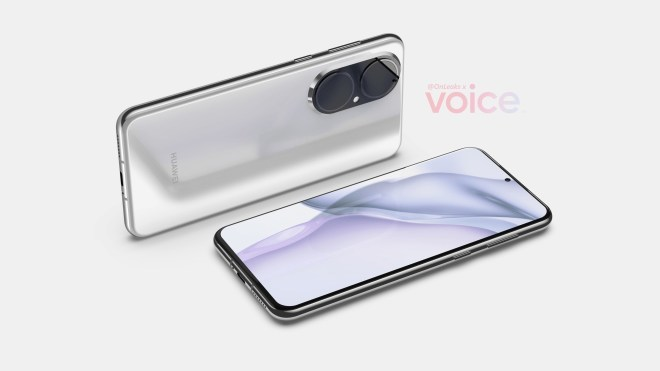
The Huawei P50 Pro, on the other hand, should be even bigger with a 6.6-inch screen and dimensions of 159 x 73 x 8.6 mm (10.3 mm taking into account the camera bulge). All models in the series are expected to have the in-screen fingerprint sensor.
Traditionally, the P50 series would use the same hardware as the Mate series. In this respect, we can assume that the models will have the same chip with 5G network support, i.e. the Kirin 9000, which is also found in the Huawei Mate 40 Pro. There is also talk of 8 GB of RAM and 128 GB or 256 GB of internal storage. With Huawei no longer able to work with chip supplier TSMC, the P50 series could be the last to use the Kirin 9000 SoC.
HarmonyOS
The P50 series is expected to come onto the market with Huawei’s own operating system HarmonyOS, which has been in beta since December 2020. Otherwise, the company would have to rely on EMUI 11, which is based on Android and does not offer Google services.
Are you fans of Huawei phones? Will the company be able to delight the market with the new HarmonyOS software? Let us know your opinion in the comments and discuss Huawei’s path and the new products with us.
Digital marketing enthusiast and industry professional in Digital technologies, Technology News, Mobile phones, software, gadgets with vast experience in the tech industry, I have a keen interest in technology, News breaking.


